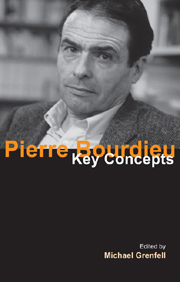Conclusion
Summary
In the course of the four parts and twelve chapters of this book, a selection of Bourdieu's key concepts has been put under the microscope. In Part I, the key words were biography, theory and practice. Chapter 1 gave a sketch of Bourdieu's own life trajectory and related personal events to both the socio-historical environment that surrounded him throughout his career and the intellectual currents of which he formed a part. The emphasis here was on the ways Bourdieu's ideas must be understood in terms of his own personal background and the very real world events that presented themselves to him. It is worth insisting again that Bourdieu's work needs to be understood in terms of its socio-genesis and as an attempt to comprehend current practical social phenomena. Chapter 2 extended this discussion by showing how issues of theory and pactice were ever present in Bourdieu's method. His own theory of practice can be traced back to both the radical tradition from which he emerged and the particular philosophical currents that resonated most with his personal and intellectual impulses.
In these concepts, issues of subjectivity and objectivity emerge, and these were confronted directly in the Introduction to Part II. Here, it was necessary to draw attention explicitly to Bourdieu's philosophical approach to the primary foundations of human experience. Structure provided the key concept in linking the subjectivity of individual lives with the objectivity of what they shape and are shaped by.
- Type
- Chapter
- Information
- Pierre BourdieuKey Concepts, pp. 213 - 218Publisher: Acumen PublishingPrint publication year: 2008
- 3
- Cited by

